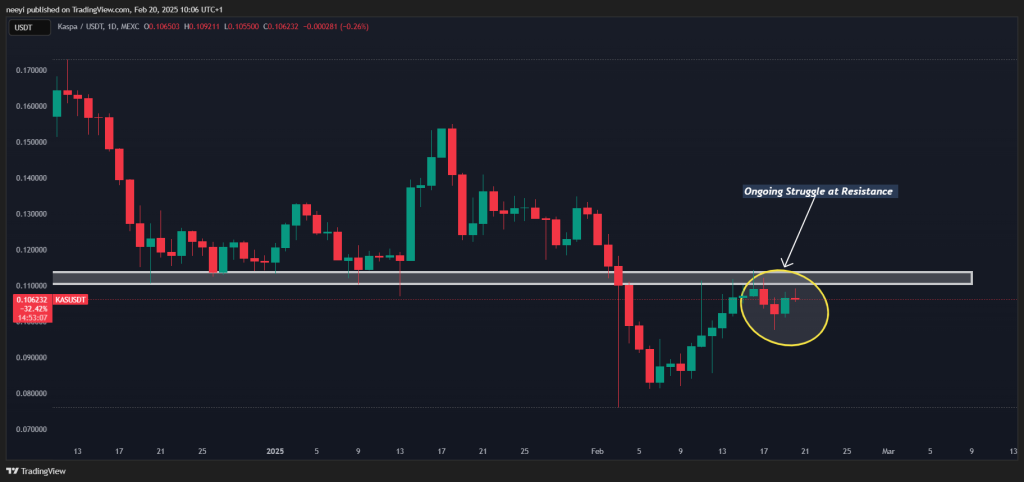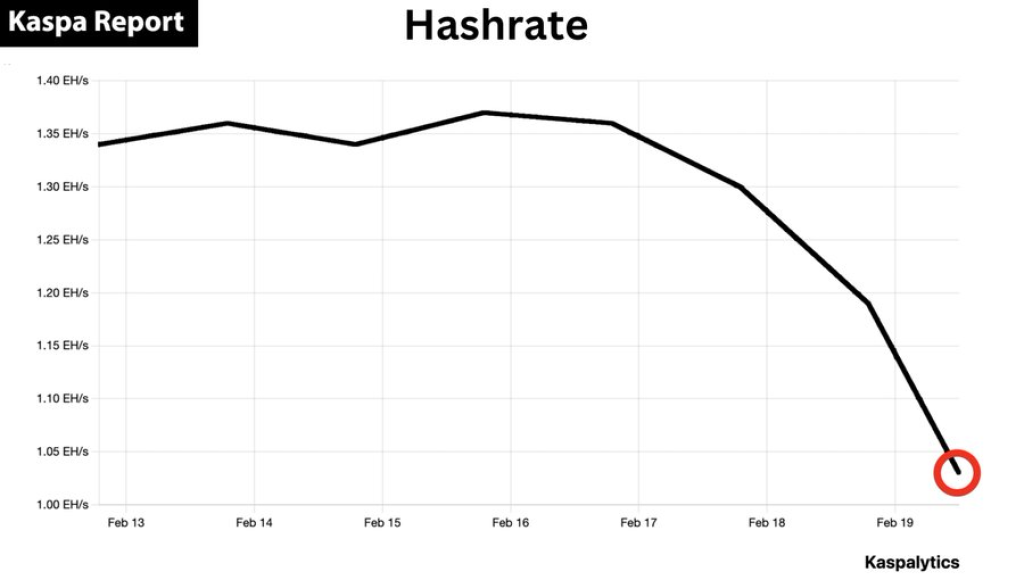Here is your rewritten article formatted for embedding in a WordPress post using HTML tags while maintaining the original quotes:
“`html
Recent data from the Kaspa network indicates a steady decline in hashrate, now falling below 1 exahash per second—representing a 40% drop from its peak. As reported by Kaspa Report, while this may initially seem alarming, it could also present a strategic opportunity for investors.
This decline is particularly notable given the ongoing struggles of the KAS price. Although there was a brief bullish retracement last week, the price has once again faced resistance, hovering below a crucial support level of approximately $0.11 over the past four days.

If this trend persists, further declines could be expected. However, with the hashrate also decreasing, some community discussions suggest that this situation might actually benefit KAS holders. But how?
Understanding Hashrate Fluctuations
Hashrate in a proof-of-work (PoW) network reflects the computational power used to solve complex mathematical problems, which are essential for adding blocks to the blockchain—or in Kaspa’s case, the blockDAG.
While a higher hashrate generally enhances network security, fluctuations are common and often misinterpreted.

Kaspa Report notes that hashrate declines can result from various factors, including routine maintenance by large-scale miners, regulatory changes, or miner capitulation.
These temporary reductions—sometimes referred to as “noise” in the mining community—typically do not impact the long-term trajectory of the network. When analyzed over extended periods on a logarithmic scale, these fluctuations appear relatively minor.
The Role of Miner Capitulation in KAS Hashrate Decline
The current drop in hashrate appears to be largely influenced by miner capitulation following Kaspa’s recent price downturn. As highlighted by Kaspa Report, the hashrate-implied value recently deviated significantly from the fiat price, prompting some miners—particularly those unfamiliar with Kaspa’s fundamentals—to halt operations.
We are likely seeing some degree of miner capitulation following Kaspa’s recent price decline. At the time of Kaspa’s price crash, the hashrate-implied value deviated substantially from its fiat price, as shown in this chart from earlier this month.https://t.co/taBNrmg3hF
— Kaspa Report (@KaspaReport) February 19, 2025
Despite this, cryptocurrency analyst dodgedlol offers a more optimistic outlook, arguing that KAS is currently undervalued relative to its network hashrate.
Using power law analysis to examine the correlation between price and hashrate, the analyst suggests that similar historical trends have often presented strong accumulation opportunities.
The Future of Kaspa Mining
“
Source: captainaltcoin.com
